If you’re cooking at home for Valentine’s Day 3 and want something that is fun, impressive, tasty, and intriguing, not to mention easy, I’d like to suggest you try salt-crust roasted snapper.
Salt-crusted snapper is a dish that is sure to make you look like a pro, but is actually extremely easy to make. Really the only trick to it is making sure the fish is cooked properly, and the ChefAlarm® and Thermapen® can make that almost certain. Let’s take a look.
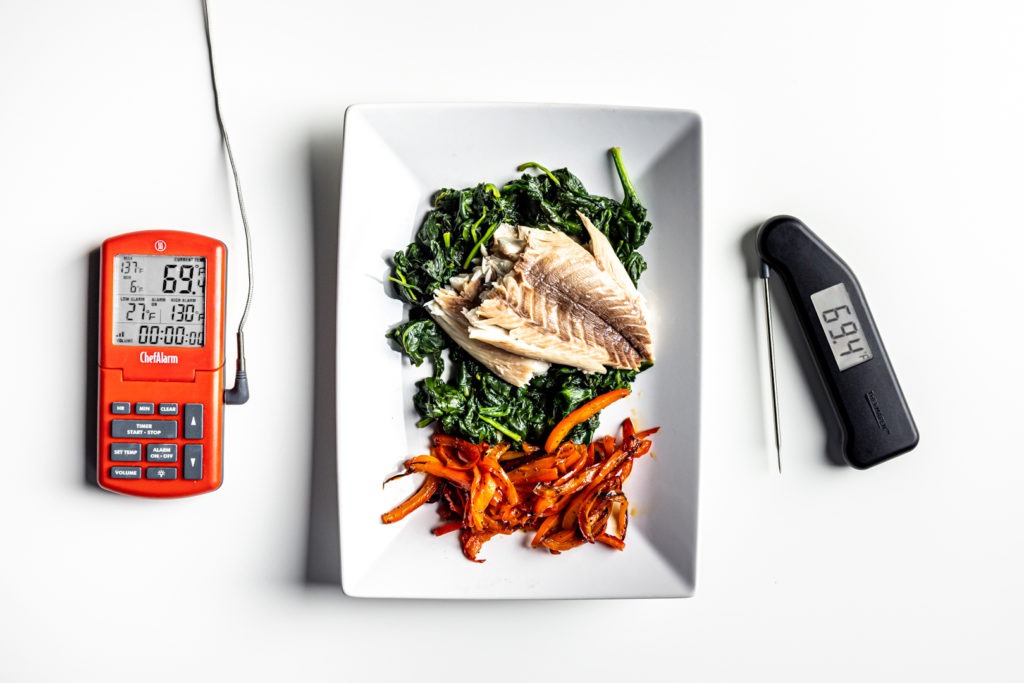
What is salt-crust cooking?
Salt-crust cooking is an ancient method that has been independently developed in cuisines around the world wherein salt is moistened and packed completely around and on the food to be cooked before it is placed in a hot oven. The salt diffuses the high heat and the water in the salt turns to steam, which all results in the food being cooked gently and quite evenly. That even cooking lends itself particularly well to fish cookery. And, in fact, one of the earliest records we have of this method—a fragment by Archestratus in the 4th century BC—is about cooking fish just like this.
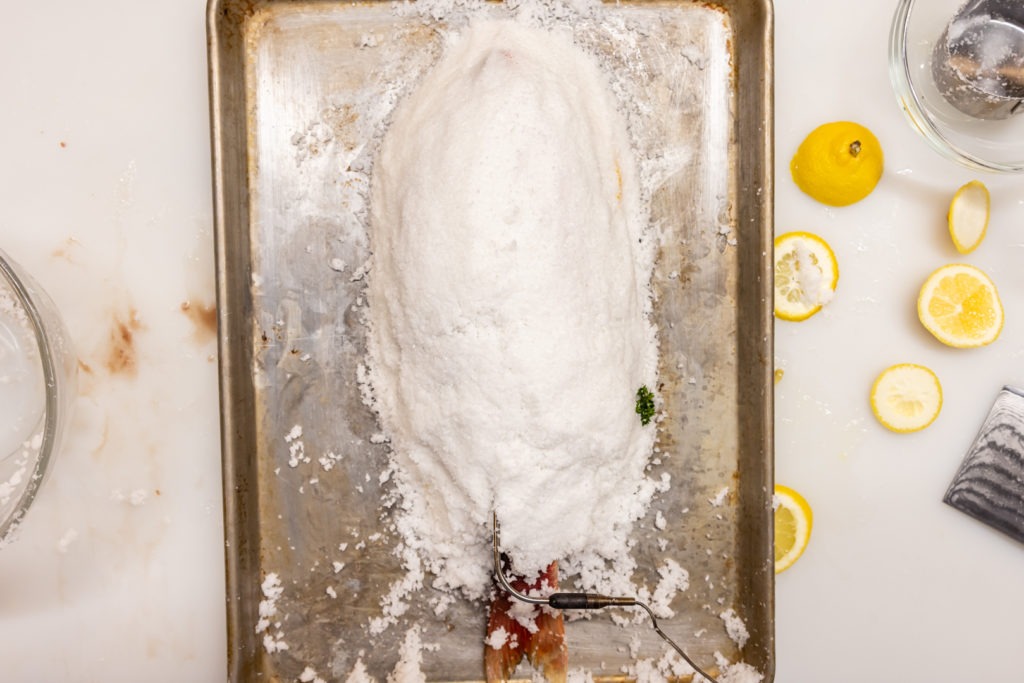
Not any salt will do here. Granular table salt won’t cut it, but kosher salt—often labeled as “coarse kosher”— is what you want. Its texture makes it better for packing and forming into the bed and dome of salt. This version also calls for the addition of egg whites, which is also in line with ancient methods. The egg whites help it to bind and also help it to keep its shape in the oven: without their proteins cooking and binding together, the salt would dry and fall apart.
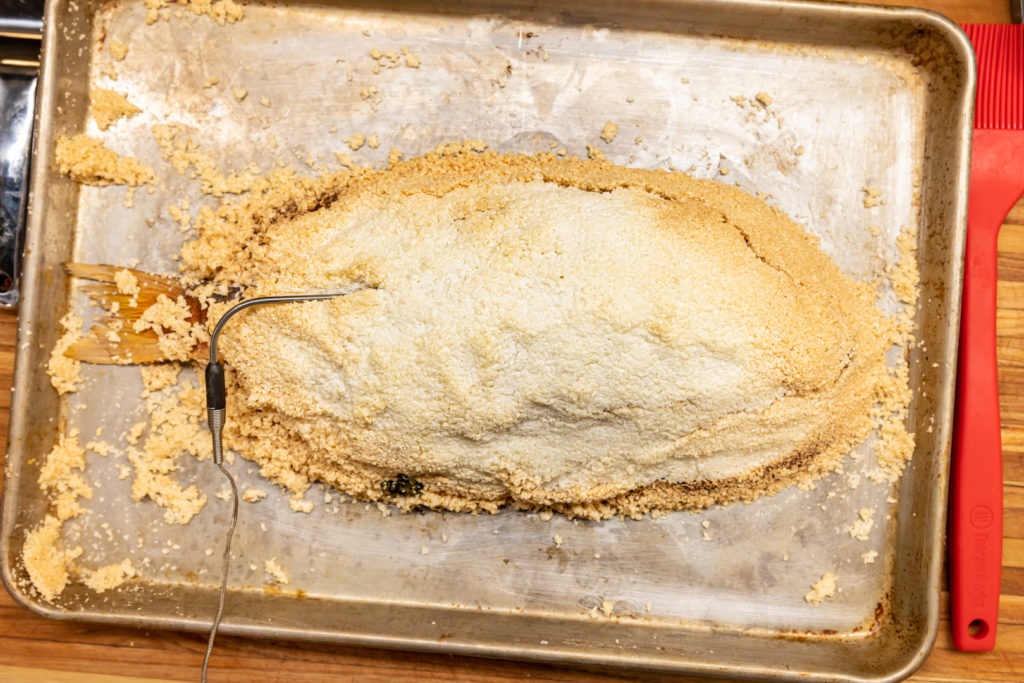
Isn’t it too salty?
You may be thinking that packing a fish in three pounds of salt might make the fish too salty. Well, it doesn’t. In fact, I almost reached for a pinch of salt when I finally got to eat it. The fish flesh becomes imbued with the lemon and the parsley 4 and is left pleasantly salty.
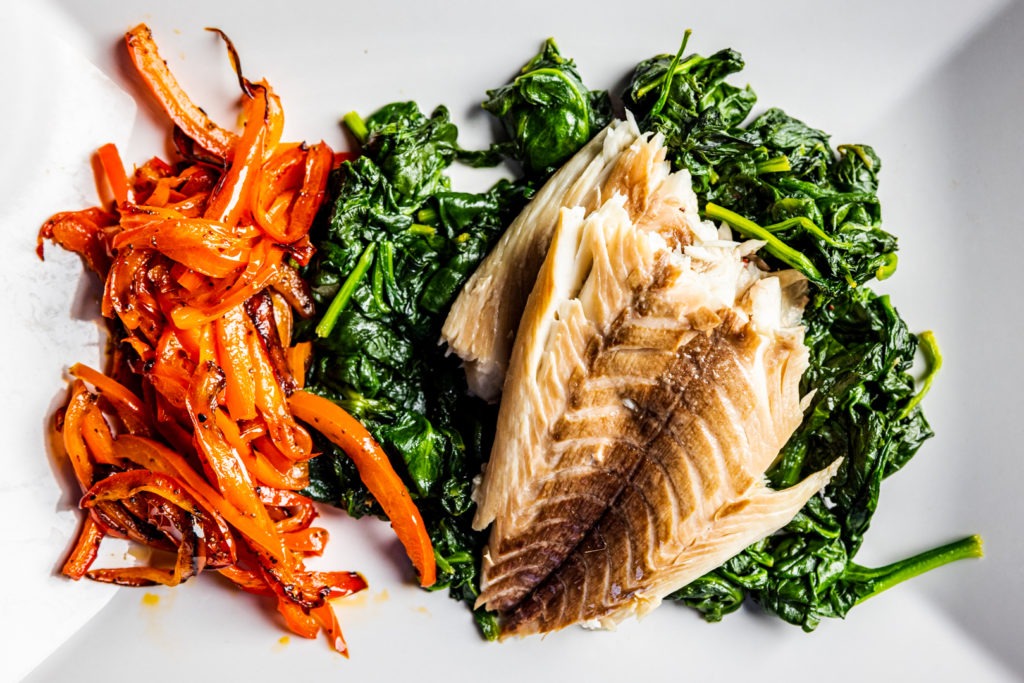
How to cook red snapper in a salt crust: the temperatures
Salt-curst cooking is usually done at high heat, and the same holds true here. The oven is set to 450°F (232°C)—a temperature that can generate steam from the wet salt to cook the fish. The fish itself is cooked to 130°F (54°C), a temperature at which the proteins are firm and flaky but not yet dried out.
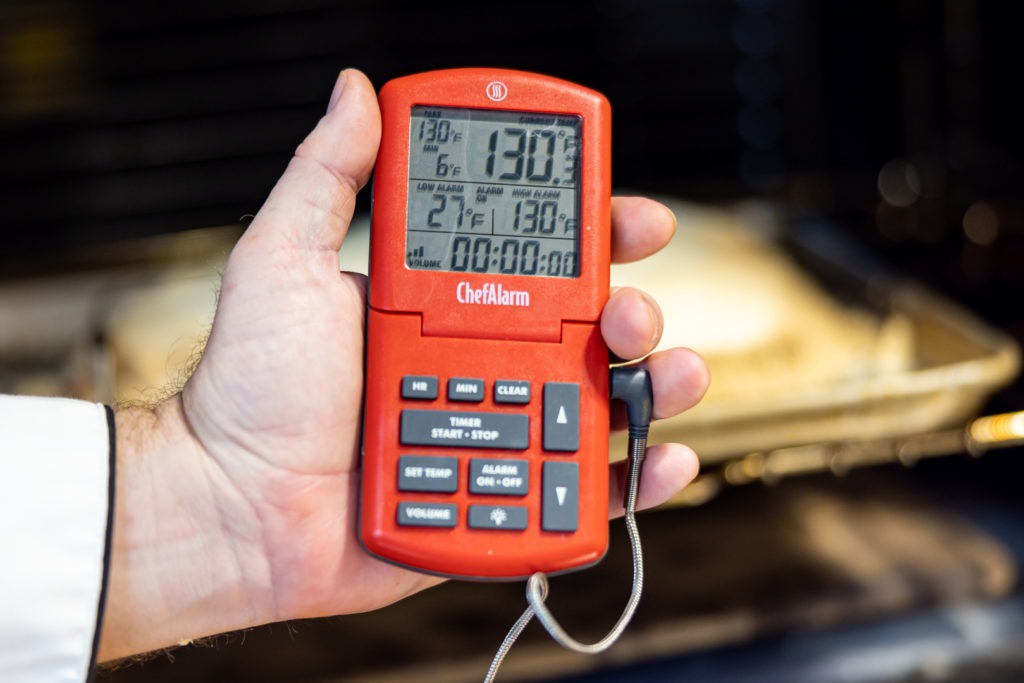
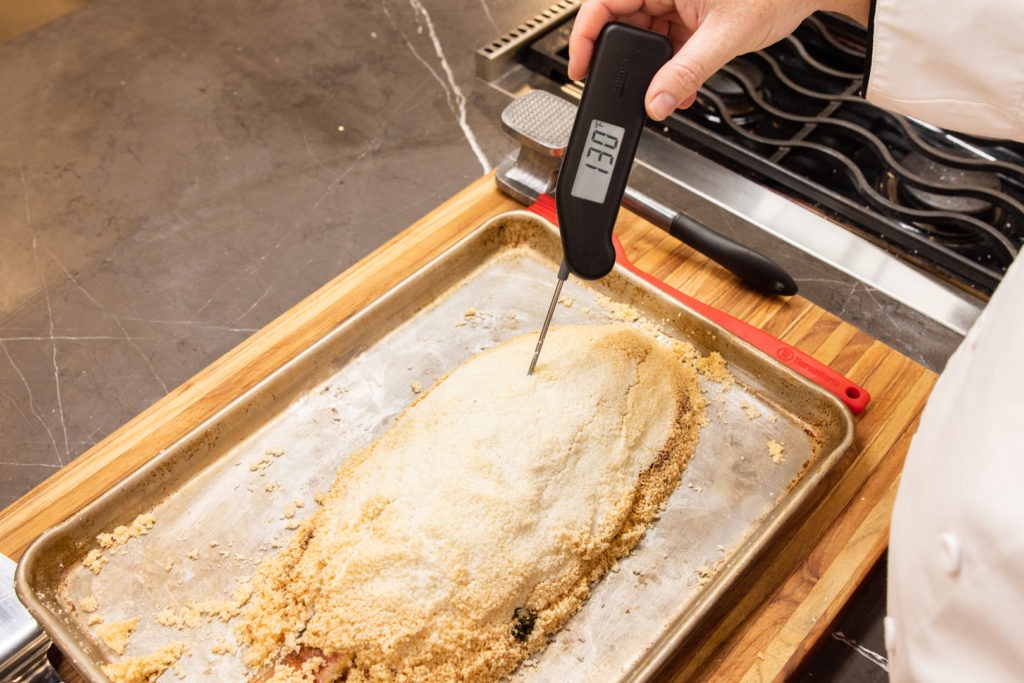
And how will we know the temperature? By using a leave-in probe thermometer like the ChefAlarm, of course! Insert the probe from the ChefAlarm into the fish so that the sensor tip is right down next to the ribcage and then pack the salt on top of the fish, with the probe sticking out through it.
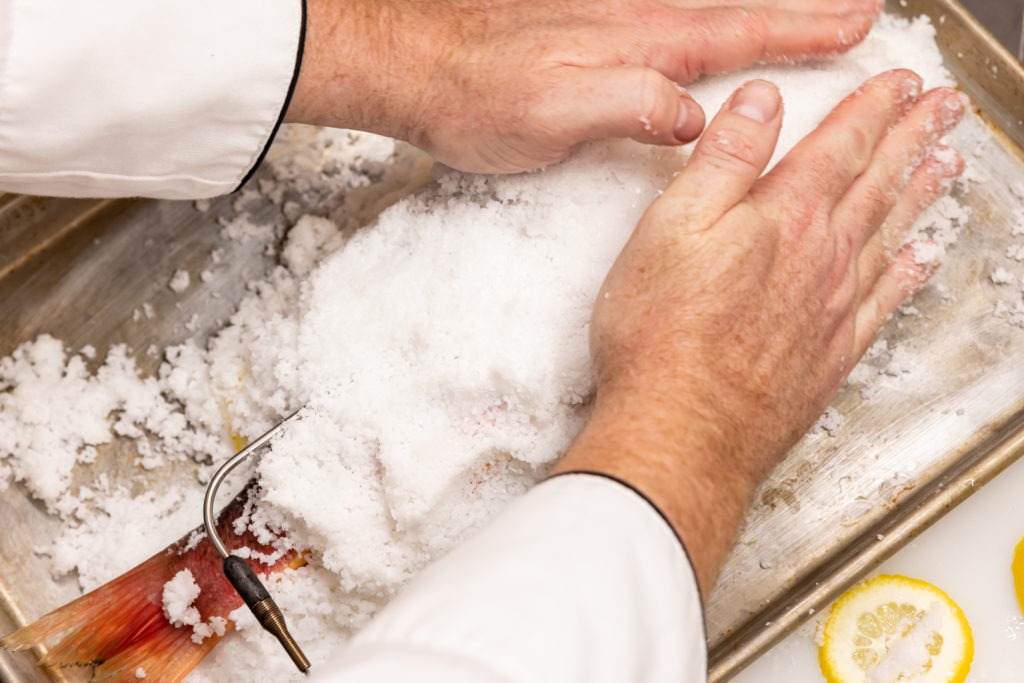
Notes on the fish
When you buy your fish, have your fishmonger de-scale it for you, gut it (if not yet gutted), and trim the fins and gills from the sides and top. We neglected to have the fins trimmed, a point I forgot when preparing my fish.
As for the fish itself, snapper is a delicious choice for this method. It has a warm, subtle flavor and I love how it smells when cooking. However, you can use whatever whole fish you like with this method. Just be sure to aim for 130°F (54°C) on your ChefAlarm.
Whether you’re cooking a fun, interesting dinner for two (with a smaller snapper!) or going for a fancy presentation for a small crowd, this ancient technique is sure to impress. And for something as impressive as this dish, it is incredibly simple to make. There are few ingredients and minimal work to prepare them, and with the guidance of the ChefAlarm and the surety of the Thermapen, you can know that deep in that salty crust, everything is cooking just the way you want it to.
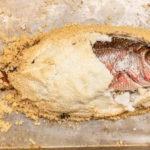
Salt-crusted Red Snapper: Perfect Temps for a Unique Dish
Description
Salt-encrusted salmon, based on the recipe “Snapper-Dome” by Alton Brown, in his book EveryDayCook, pg. 148.
Ingredients
- 1 snapper, cleaned, trimmed, and scaled, 1-2 lb
- 2 lemons, sliced thinly
- 6 sprigs parsley
- 3 lb kosher salt
- 3 large egg whites
- about 1/4 C water
Instructions
- Preheat your oven to 450°F (232°C).
- Put a few slices of lemon and the parsley sprigs in the cavity of the fish.
- In a large bowl, mix the salt, egg whites, and 1/4 C water. Mix it until everything is evenly moistened. It should resemble wet sand in texture, and should be able to clump together somewhat when you squeeze a fistful of it. If it is not wet enough to clump, add a few tablespoons of water, mix, and check again.
- Use about 1/3 of the salt to make a bed 1/2″ thick on a sheet pan that is roughly the size and shape of the body of the fish. The tail can hang out the back.
- Line the bed with lemon slices and lay the fish on the lemon and salt bed.
- Insert the probe from your ChefAlarm into the thickest part of the fish. Set the high-temp alarm for 130°F (54°C).
- Coat the fish with the remainder of the salt mixture, encasing it completely (except the tail) in salt.
- Place the pan in the oven and bake until the thermometer alarm sounds—about 20 minutes, depending on the size and initial temperature of your fish.
- When the alarm sounds, use a Thermapen to verify the internal temperature by jabbing it through the salt crust. Look to be sure you don’t see any temps below 130°F (54°C) and remove the fish from the oven.
- Use a meat tenderizer or a rolling pin to gently but firmly crack the salt crust. Clear away the large chunks of salt batter and brush the little bits off with a pastry brush. (A silicone brush is great for this because the silicone bristles won’t absorb any fish flavor.)
- Use a serrated cake server or a knife to cut a line down the spine of the fish and from the spine down around the gills. Peel the skin gently from the fish from the head towards the tail.
- Lift filets off the top piece of the fish and set them aside for service. Bones will come out with the meat, but they are big enough to notice and eat around.
- Lift the spine out of the fish by pulling up and forward on the tail. The spine and head should come off pretty easily. Discard the parsley and lemons in the fish.
- Lift the remaining filet pieces out of the salt, trying to leave the skin behind.
- Serve!
Shop now for products used in this post:
something I very much recommend doing↩
Feel free to experiment with flavors—it was all I could muster not to pick up some kaffir lime leaves at the Asian market to stuff into the cavity with a few slices of ginger↩
something I very much recommend doing↩
Feel free to experiment with flavors—it was all I could muster not to pick up some kaffir lime leaves at the Asian market to stuff into the cavity with a few slices of ginger↩
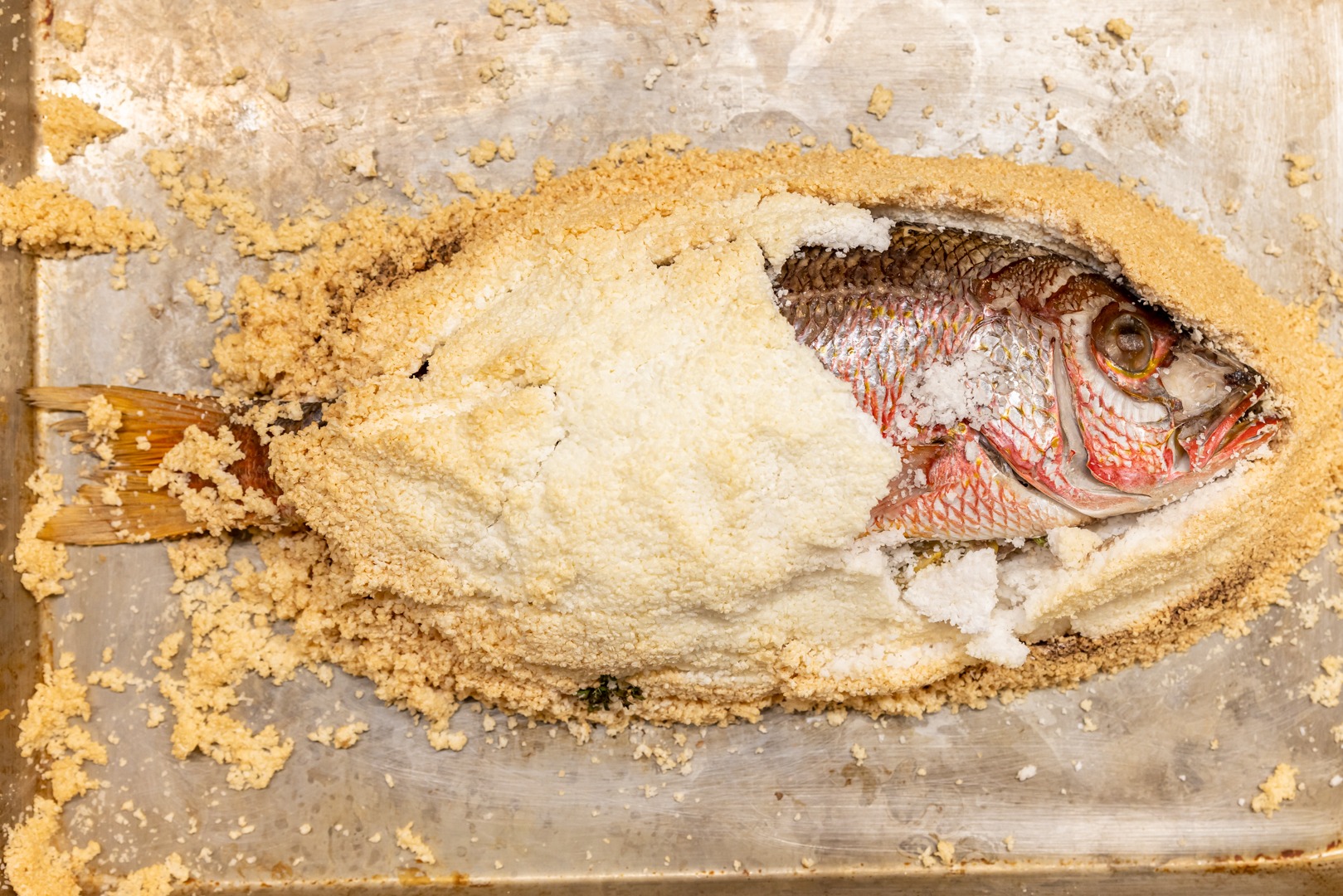
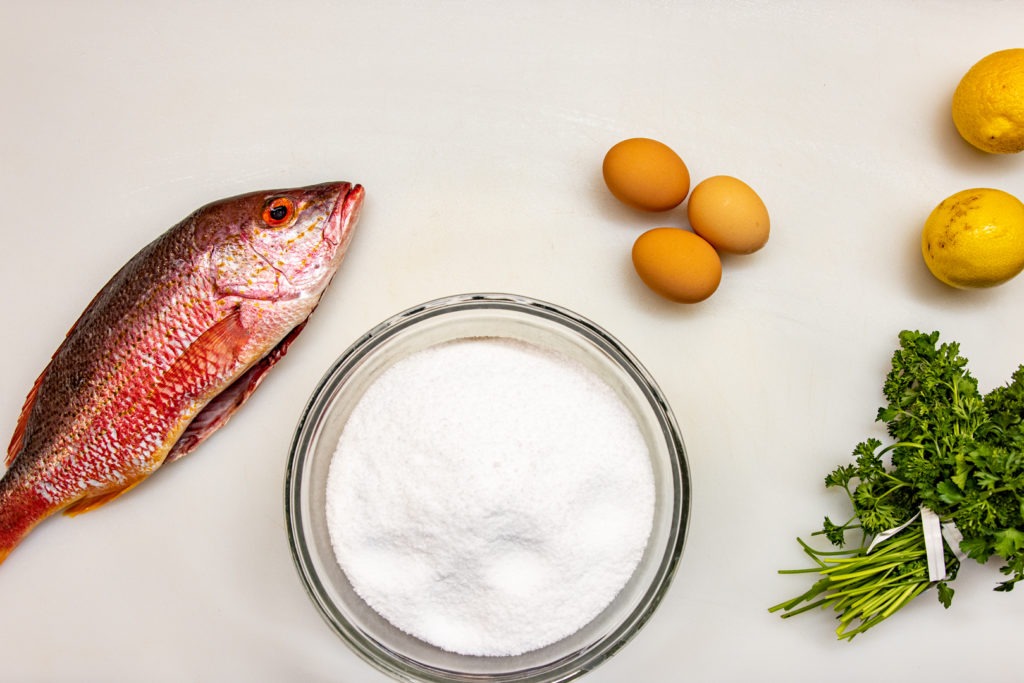
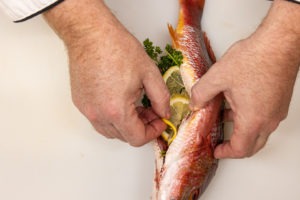
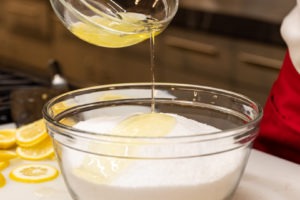
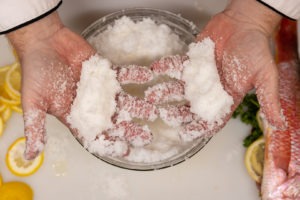
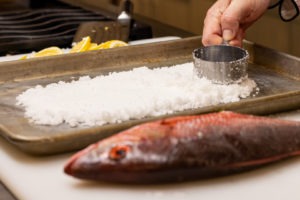
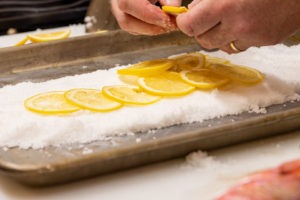
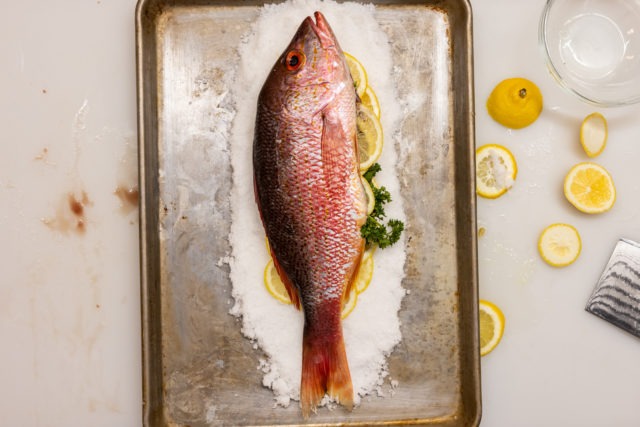
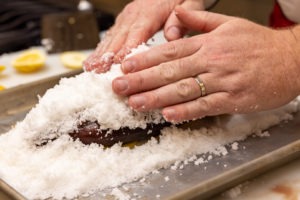
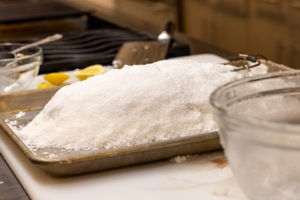
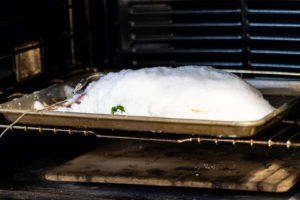
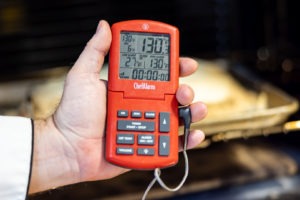
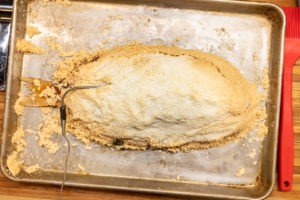
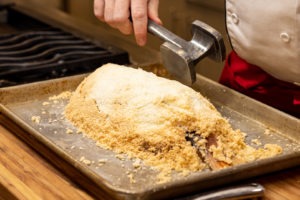
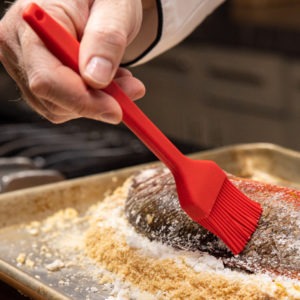
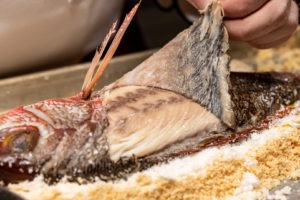
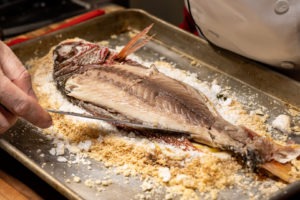
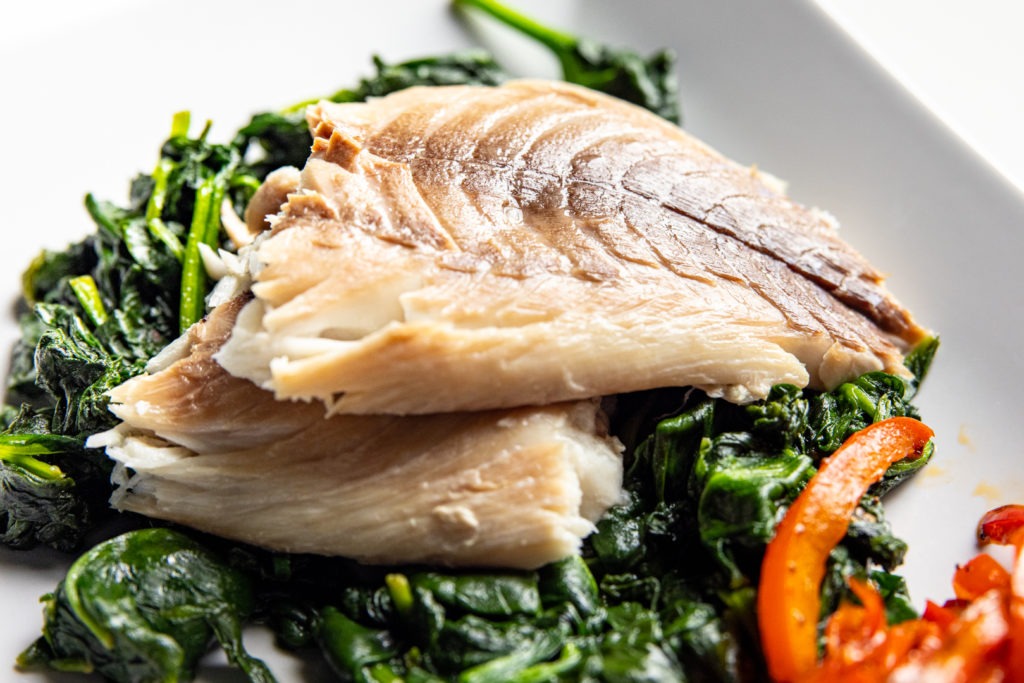
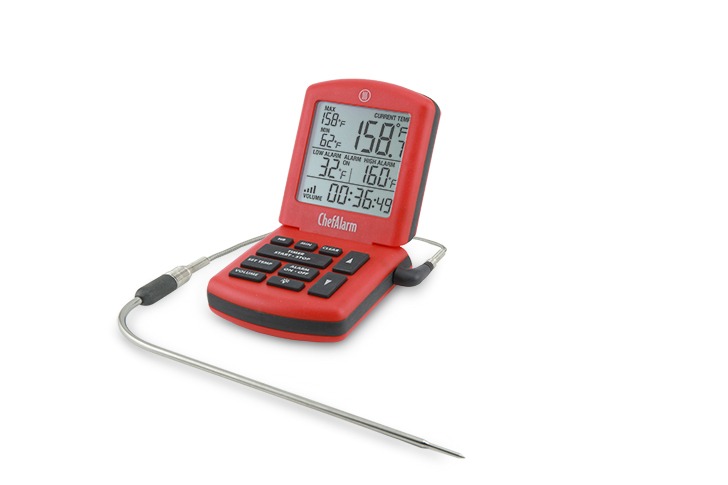
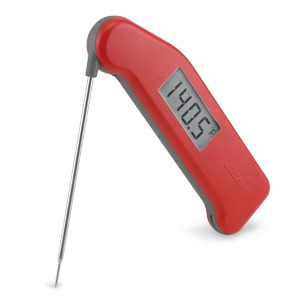
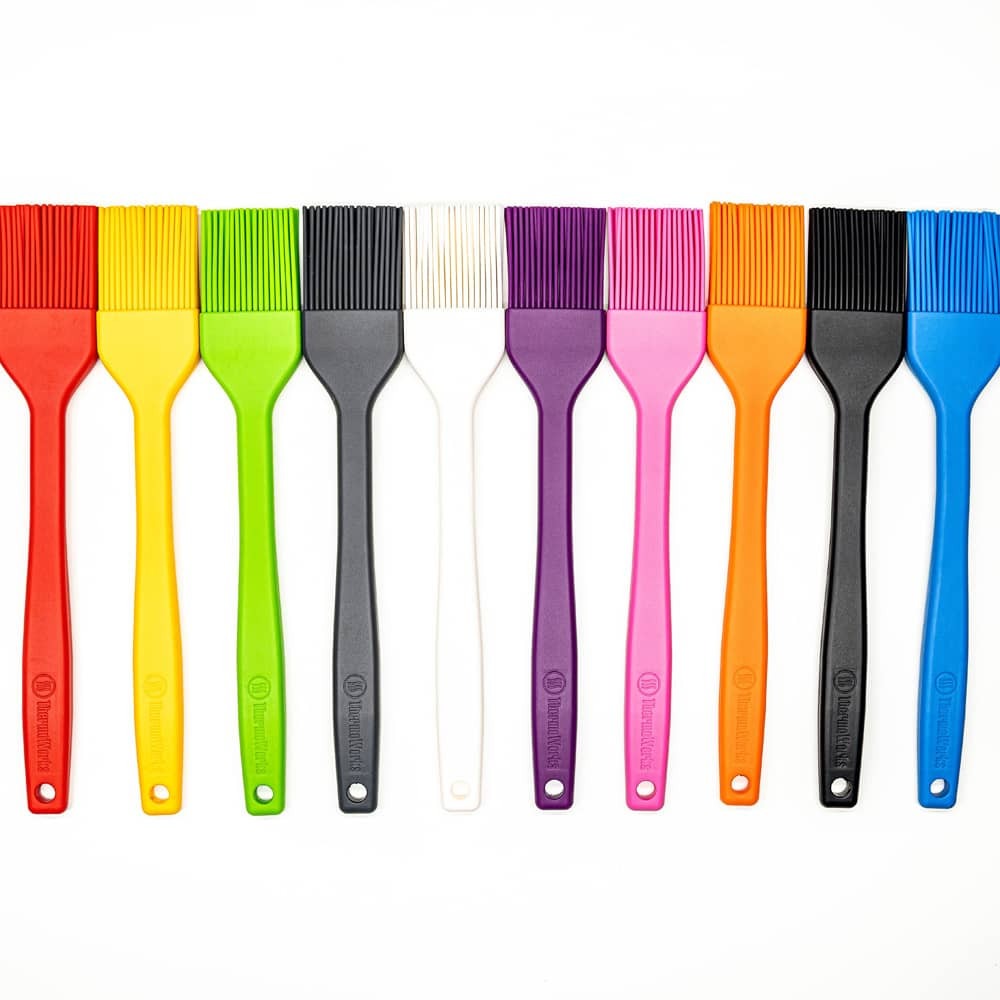

Catherine Marshall says
Hi: I see where the probe is on the inside of the oven, but then I’m assuming that the part of the alarm that you hear and read leads to the outside of the oven. Please confirm. I’m wondering because the cable that leads from the probe to the digital part of the thermometer doesn’t look long enough to lead to the outside of the oven. 7️⃣
Martin says
The probe cables are 47″ long, plenty long enough to come out of the oven to the unit.
Andrew Brooks says
This worked surprisingly well. I think I will try again with some other herbs like fresh basil, and use other citrus as well.
I was surprised at how hard the crust was to remove. I would suggest placing a sheet of nonstick aluminum foil before the bottom salt.
One surprise side benefit: I noticed that the salt layers appear to soak up cooking odor; I don’t mind the smell of cooking fish, but some do, and there wasn’t much odor at all.